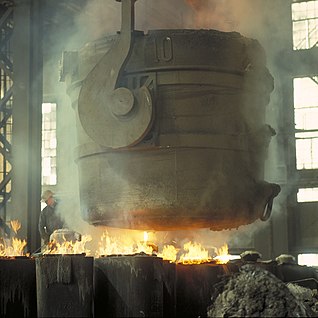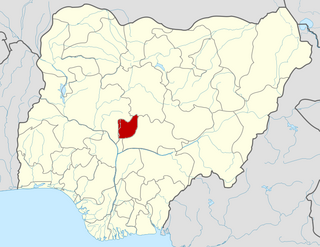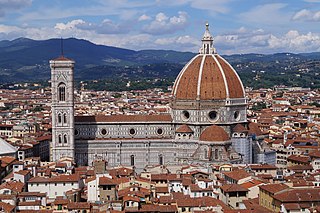Related Research Articles

Casablanca is the largest city of Morocco. Located in the central-western part of Morocco bordering the Atlantic Ocean, it is the largest city in the Maghreb region and the eighth-largest in the Arab world. Casablanca is Morocco's chief port and one of the largest financial centers in Africa. According to the 2019 population estimate, the city has a population of about 3.71 million in the urban area and over 4.27 million in the Greater Casablanca. Casablanca is considered the economic and business center of Morocco, although the national political capital is Rabat.

Steel is an alloy of iron with typically a few percent of carbon to improve its strength and fracture resistance compared to iron. Many other elements may be present or added. Stainless steels that are corrosion- and oxidation-resistant need typically an additional 11% chromium. Because of its high tensile strength and low cost, steel is used in buildings, infrastructure, tools, ships, trains, cars, machines, electrical appliances, and weapons. Iron is the base metal of steel. Depending on the temperature, it can take two crystalline forms : body-centred cubic and face-centred cubic. The interaction of the allotropes of iron with the alloying elements, primarily carbon, gives steel and cast iron their range of unique properties.

Tadao Ando is a Japanese self-taught architect whose approach to architecture and landscape was categorized by architectural historian Francesco Dal Co as "critical regionalism". He is the winner of the 1995 Pritzker Prize.
In computing, an opcode is the portion of a machine language instruction that specifies the operation to be performed. Beside the opcode itself, most instructions also specify the data they will process, in the form of operands. In addition to opcodes used in the instruction set architectures of various CPUs, which are hardware devices, they can also be used in abstract computing machines as part of their byte code specifications.

Modern architecture, or modernist architecture, was an architectural style based upon new and innovative technologies of construction, particularly the use of glass, steel, and reinforced concrete; the idea that form should follow function (functionalism); an embrace of minimalism; and a rejection of ornament. It emerged in the first half of the 20th century and became dominant after World War II until the 1980s, when it was gradually replaced as the principal style for institutional and corporate buildings by postmodern architecture.
Critical regionalism is an approach to architecture that strives to counter the placelessness and lack of identity of the International Style, but also rejects the whimsical individualism and ornamentation of Postmodern architecture. The stylings of critical regionalism seek to provide an architecture rooted in the modern tradition, but tied to geographical and cultural context. Critical regionalism is not simply regionalism in the sense of vernacular architecture. It is a progressive approach to design that seeks to mediate between the global and the local languages of architecture.

Postmodern architecture is a style or movement which emerged in the 1960s as a reaction against the austerity, formality, and lack of variety of modern architecture, particularly in the international style advocated by Philip Johnson and Henry-Russell Hitchcock. The movement was introduced by the architect and urban planner Denise Scott Brown and architectural theorist Robert Venturi in their book Learning from Las Vegas. The style flourished from the 1980s through the 1990s, particularly in the work of Scott Brown & Venturi, Philip Johnson, Charles Moore and Michael Graves. In the late 1990s, it divided into a multitude of new tendencies, including high-tech architecture, neo-futurism and deconstructivism.

The Federal Capital Territory, commonly known as FCT, or loosely as FCT-Abuja, is a federal territory in central Nigeria. Abuja, the capital city of Nigeria, is located in this territory. FCT was formed in 1976 from parts of the states of old Kwara, Niger, Kaduna and Plateau States with the bulk of landmass carved out of Niger State. It is within the Middle Belt region of the country. Unlike the States of Nigeria, which are headed by elected Governors, it is administered by the Federal Capital Territory Administration, headed by a minister appointed by the President.

Neo-futurism is a late-20th to early-21st-century movement in the arts, design, and architecture. It has been seen as a departure from the attitude of post-modernism and represents an idealistic belief in a better future.

The Spencer Museum of Art is an art museum located on the University of Kansas campus in Lawrence, Kansas. The museum houses collection that currently numbers nearly 36,000 artworks and artifacts in all media. The collection spans the history of European and American art from ancient to contemporary, and includes broad holdings of East Asian art. Areas of special strength include medieval art; European and American paintings, sculpture and prints; photography; Japanese Edo period painting and prints; 20th-century Chinese painting; and KU’s ethnographic collection, which includes about 10,000 Native American, African, Latin American and Australian works.
The Aga Khan Trust for Culture (AKTC) is an agency of the Aga Khan Development Network (AKDN), a family of institutions created by Aga Khan IV with distinct but complementary mandates to improve the welfare and prospects of people in the developing world, particularly in Asia and Africa. It focuses on the revitalization of communities in the Muslim world—physical, social, cultural, and economic. The AKTC was founded in 1988 and is registered in Geneva, Switzerland, as a private non-denominational philanthropic foundation.
The architecture of Serbia has a long, rich and diverse history. Some of the major European style from Roman to Postmodern are demonstrated, including renowned examples of Raška, Serbo-Byzantine with its revival, Morava, Baroque, Classical and Modern architecture, with prime examples in Brutalism and Streamline Moderne.
The Cal Poly Pomona College of Environmental Design (CENV) is a college part of the California State Polytechnic University, Pomona. The college houses over 1,600 students; making it one of largest environmental design programs in the United States. The college offers bachelor's degrees in five departments, as well as three master's degree programs. It offers a Master of Interior Architecture, professional degree in collaboration with the University of California, Los Angeles (UCLA).

Architecture is both the process and the product of planning, designing, and constructing buildings or other structures. Architectural works, in the material form of buildings, are often perceived as cultural symbols and as works of art. Historical civilizations are often identified with their surviving architectural achievements.

The architecture of Sri Lanka displays a rich variety of architectural forms and styles. Buddhism has had a significant influence on Sri Lankan architecture, since it was introduced to the island in the 3rd Century BCE.

The Driehaus Architecture Prize, fully named The Richard H. Driehaus Prize at the University of Notre Dame, is a global award to honor a major contributor in the field of contemporary traditional and classical architecture. The Driehaus Prize was conceived as an alternative to the predominantly modernist Pritzker Prize.

Annabelle Selldorf is a German-born architect and founding principal of Selldorf Architects, a New York City-based architecture practice. She is a fellow of the American Institute of Architects (FAIA) and the recipient of the 2016 AIANY Medal of Honor. Her projects include the Sunset Park Material Recovery Facility, Neue Galerie New York, The Rubell Museum, a renovation of the Sterling and Francine Clark Art Institute, David Zwirner's 20th Street Gallery, The Mwabwindo School, 21 East 12th Street, 200 11th Avenue, 10 Bond Street, and several buildings for the LUMA Foundation's new contemporary art center in Arles, France.

New Classical architecture, New Classicism or the New Classical movement is a contemporary movement in architecture that continues the practice of Classical architecture. It is sometimes considered the modern continuation of Neoclassical architecture, even though other styles might be cited as well, such as Gothic, baroque, renaissance or even non-Western styles.

The architecture of Algeria encompasses a diverse history influenced by a number of internal and external forces, including the Roman Empire, Muslim conquest of the Maghreb, French colonization, and movements for Algerian independence.

The architecture of Casablanca is diverse and historically significant. Casablanca, Morocco's economic capital, has a rich urban history and is home to many notable buildings in a variety of styles. Throughout the 20th century, architecture and urban development in Casablanca evolved in a way that was simultaneously specific to the city's contexts, and consonant with international ideas.
References
- ↑ "African Modernism – Architecture of Independence, Manuel Herz Architects". www.manuelherz.com. Archived from the original on 2020-01-28. Retrieved 2020-03-11.
- 1 2 Wainwright, Oliver (2015-03-01). "The forgotten masterpieces of African modernism". The Guardian. ISSN 0261-3077. Archived from the original on 2020-07-02. Retrieved 2020-03-11.
| | This architecture-related article is a stub. You can help Wikipedia by expanding it. |